03 Oct Your 10-Step Roadmap to building a Sustainable wardrobe you will love
We live in a world of “fast fashion”, which like a ghastly beast from Stranger Things has been hiding in the dark, just outside of our awareness. The darkness of the consumeristic machine that persuades us to buy more and cheaper.
The relentless drive of consumerism that persuades us to buy more and cheaper, and the countless factories with dangerous working conditions racing to keep up with the insatiable demand, are now threatening to consume us all.
According to Greenpeace, global clothing production doubled from 2000 to 2014. We buy 60% more garments every year, keep them for about half as long as fifteen years ago, and leave more and more waste.
We are living in the dark. The darkness of closets, where we occasionally dump our never-worn party dresses hoping to wear them some day, and we all know what “some day” means. The darkness of not knowing where our clothing comes from. And, most importantly, the darkness of not being aware of the huge environmental impact caused by “fast fashion”.
How to stop this ravenous beast from exhausting our planet’s resources? In 2022, more and more fashion companies are focusing on using sustainable materials, as well as high-tech materials that provide aesthetics and function. Australian website Good on You lists more than two thousand sustainable fashion brands. Multi-brand retailer Asos and Global Fashion Group’s The Iconic recently introduced search filters for recycled fabrics, while Farfetch’s Conscious Edit highlights sustainable products. Etsy, the global marketplace for all things handmade, has gained trust of forty five million buyers in the fifteen years of its existence.
As fashion consumers, we can also take steps towards sustainable and eco-friendly fashion. We hope that at least some of them will make your life lighter and happier!
Step 1. Awareness
Awareness of “fast fashion” and all its implications is the first step. While there are plenty of resources on this topic online, the documentary film True Cost is a terrific starting point. We also outlined some of the largest environmental problems caused by fast fashion here. Here is a short animated video from SokFok Studio (a great resource on sustainable fashion) which explains the magic behind creating a pair of jeans and their real cost.
Video credit: SokFok Studio on Vimeo
Then, there is also awareness about ethical and sustainable fashion.
Sustainable clothing is made with materials derived from eco-friendly resources, and puts people and environment at the center of clothing production.
Step 2. Don’t buy more stuff
There is a little cute book illustrated and written by Sarah Lazarovic called A Bunch of Pretty Things I Did Not Buy. It covers “slow fashion” and has a fun illustration of “Buyerarchy of needs” which we found brilliant.
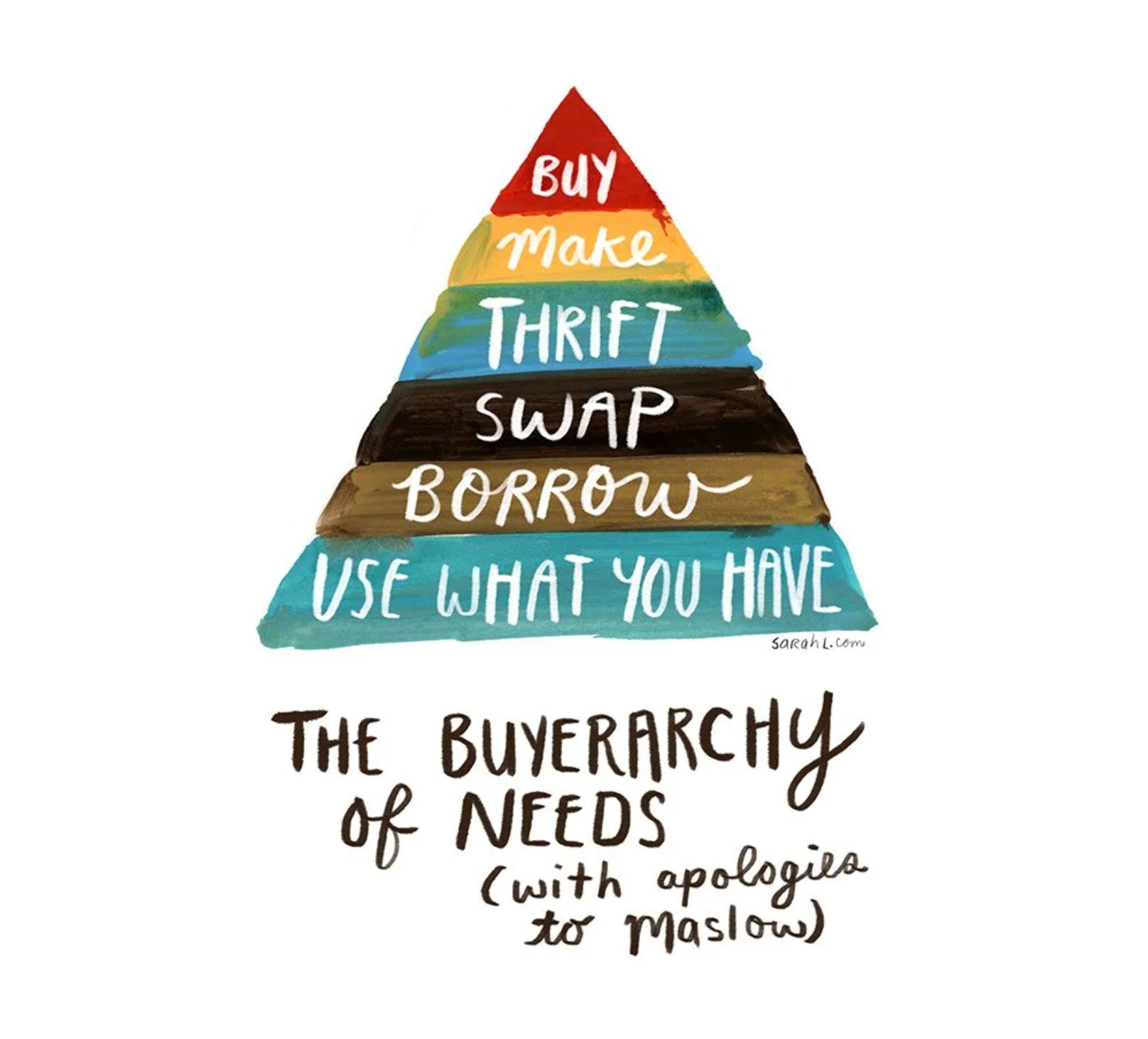
Photo credit: Sarah Lazarovic, A Bunch of Pretty Things I Did Not Buy
Unless you are hiding in a bunker from a zombie apocalypse with a pair of imitation jeans and threadbare Christmas sweater, chances are: you have enough clothes for at least 30 great looks. When shopping, ask yourself:
Will I wear this at least 30 times?
Can create at least 3 distinct looks with it?
Is the material eco-friendly?
Is its production fair trade?
Three dresses, three pairs of jeans, two skirts, two sweaters, three tops, two pairs of shoes. You mix and match all these, and you can look different every single day. In case you are rolling your eyes with “Yeah right, I need to keep up with the trends” or “I’ve already posted this dress three times on Instagram”, read on. Sustainable living isn’t about looking drab.
Step 3. Rent high quality designer clothing
Why buy new clothes each month if you can submerge yourself in the “forever-rotating closet of designer clothing, accessories and more” from Rent The Runway. (You can learn more about how Jenn Hyman got the idea for her business and more from NPR podcast How I built this). Rent The Runway types of subscriptions, ranging from $90 to 150$ a month, with the latter giving you unlimited swaps, ability to rent 4 items at a time from more than 650 designers. You know what’s also great? You can wear clothing that values up to $3000.
Say hello to your first Gucci. Loudly and proudly.
You can also check out peer-to-peer clothing renting platforms like Tulerie that not only allow you to rent items but also lend out your own clothing.
Step 4. Organize “swap parties”
For many of us, fashion is a form of connecting with other people. Do you know the feeling of rushing to get to a Nordstrom sale after receiving a chorus of “I love you shoes!” at work? There are also other types of social connection sustainable fashion can offer – a “swap party”. Call up your friends, it’s time to finally spend good times together over a couple glasses of wine, binge watching Netflix, finding new grateful owners for the clothing you will probably never wear, and even find out which items you still care about. With the masks, of course, or virtually.
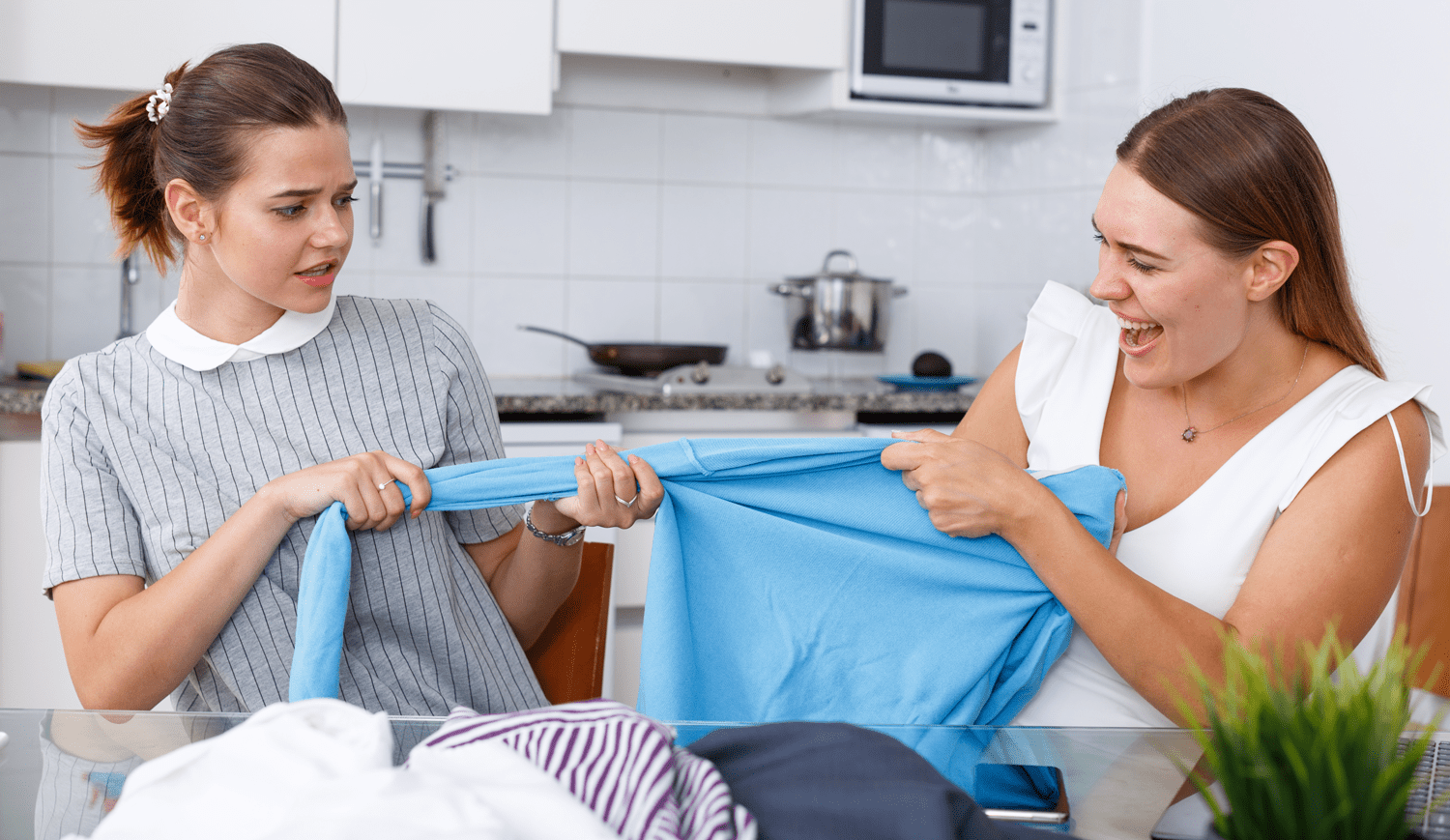
Photo credit: JackF on Adobe Stock
Step 5. Get thrifty
The fast fashion industry is responsible for 8-10% of global carbon emissions and it is well-known for its enormous water and energy use, as well as negligent exploitation of workers and animals. When you buy a pre-loved garment, you are eliminating these factors from the equation and help slow down the fast fashion cycle. In addition, you are keeping this garment from landfills, where many of them emit methane as they decompose. Methane is a greenhouse gas that is far more potent than carbon dioxide.
Secondly, second-hand fashion is very affordable and accessible. You can easily find a high quality gently used leather jacket for $150-200 or a Prada skirt for $15 on TheRealReal, for example. You might find many local thrift stores popping up in your neighborhood, and there are plenty of great online marketplaces to choose from, where you will easily find what you need using user-friendly marketplace filters and sorting options.
Quality sustainable clothing sounds great but it is also undoubtedly more expensive than an average fast fashion garment. This is where thrifting comes to play offering one of the most eco-friendly fashion options for a fraction of a cost. Since more and more people have been transitioning to sustainable lifestyles, the resale market has been blooming. Online thrift marketplaces like TheRealReal, Depop, Vestiaire Collective, Poshmark are revolutionizing the way we think about second-hand.
Read more about second-hand marketplaces and shop our curated pre-loved gems here.
Step 6. Make your own clothes
If you have much free time, love playing with materials and know how to sew, being your own personal designer might be a way to go. From Youtube videos and websites like Skillshare, Creative Bug and Udemy, there are thousands of people who are excited to teach you fashion making and sewing.
Moving up the “Buyerarchy of needs” is the final destination – buying. There is nothing wrong with buying new clothing, as long as it follows some rules. And those are healthy rules that will make you feel good about yourself in the long run.
Step 7. Choose eco-friendly materials
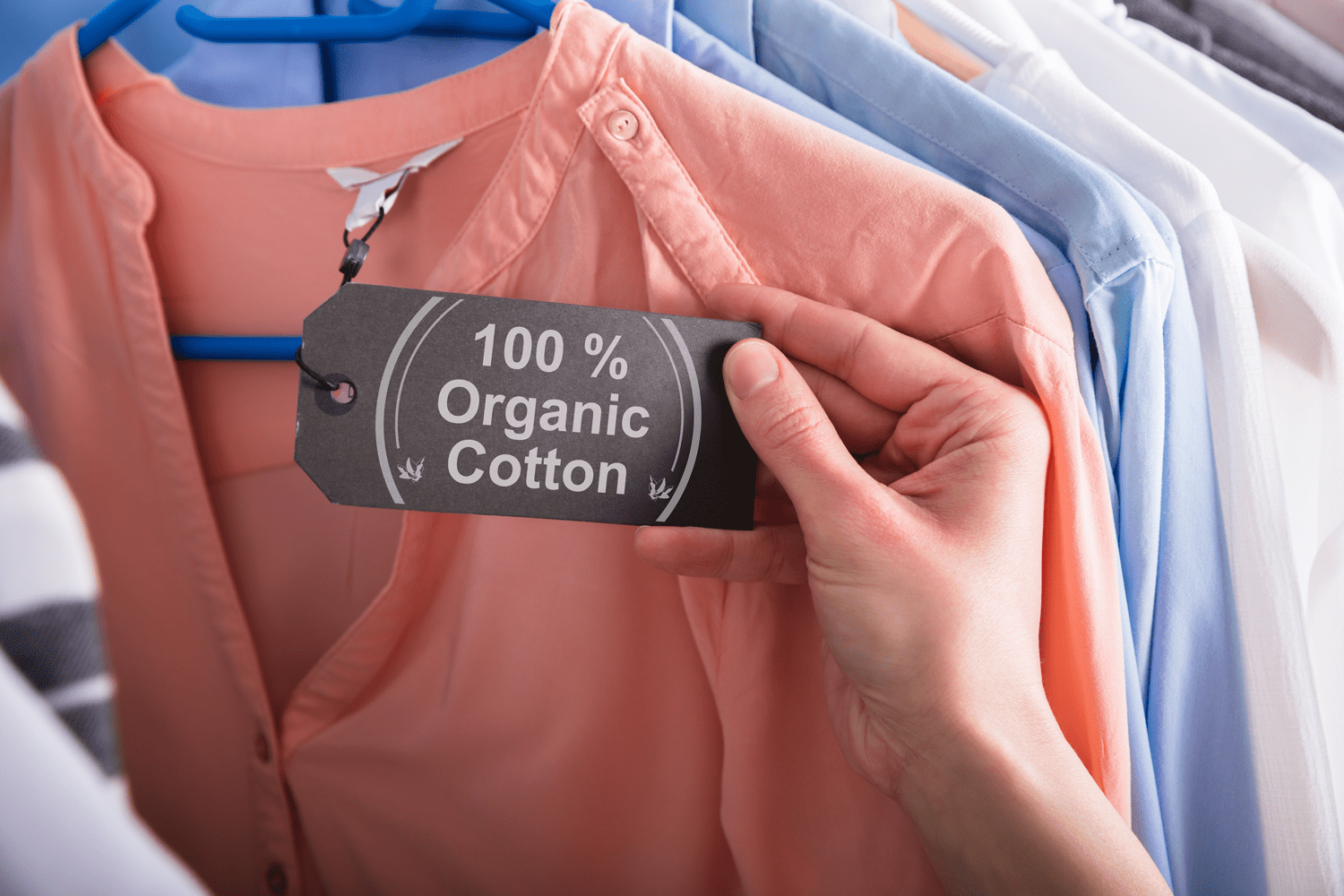
Photo credit: Andrey_Popov on Shutterstock
Eco-friendly fabrics like cotton and wool are all biodegradable, which means they easily decompose and break down by microorganisms.
Biodegradability of fabrics depends on the amount of chemicals used in the production cycle. The logic is quite simple – the more chemicals are used, the longer it takes for the fabric to biodegrade. While synthetic fabrics can technically biodegrade, it happens much slower, giving them enough time to emit greenhouse gases like methane into the air. Which is not good news, of course.
Whenever you can, shop for clothing made of the following fabrics: linen, hemp, organic cotton, wool, ramie, jute, silk, and organic bamboo. Fabric of the World is a great resource if you want to learn about sustainable fabrics and related environmental problems in more depth.
What about shoes? Use recycled and stable upper, recycled wooden soles or soles made from recycled rubber resin. When shopping for leather shoes, look up about where leather is sourced and how the animals are treated. Buy high quality shoes that will be an investment – some of our favorite sustainable shoes brands are Eileen Fisher, Amour Vert, Allbirds, Veja, Filippa K, and Rothy’s.
Learn about eco-friendly fabrics in our other Blog posts and shop our curated leather alternatives collection in this post.
Step 8. Know where your clothing comes from
Ever wondered where your clothing comes from? Now might be a good time to check. Lots of fashion brands include information on how they are supporting safe working conditions throughout the supply chain and what materials they use. You can also check out Good On You website and install Good On You app which will let you not only see where your favorite brands stand on sustainability but also discover more than over 200 ethical brands. Fair Wear Foundation serves the same mission. Remember – you have a right to know what you wear and the true cost of it! And of course, check the labels before buying and read product descriptions when shopping online.
Step 9. Shop less but quality
In the old good days, no, not three months ago, it took weeks and a lot of money to create a beautiful garment that would enjoy years of glamorous Great Gatsby-style parties. Now quality has for the most part been compromised for quantity. What is the proportion of high-quality clothing in your current wardrobe? Have a quick glance. If it’s less than 50 percent, maybe it’s time to rethink your fashion shopping strategy.
High quality designer clothing is much more likely than cheaper alternatives to use durable materials and last longer. In many cases, these will be sustainable materials. It will also look and fit better. And then, of course, it will let you stand out and sparkle because it’s more exclusive.
On your path to shopping quality fashion, check out our curated looks here.
10. Take action: join Fashion Revolution
Fashion Revolution is a global movement with the mission to unite people and organizations to work together towards changing the way our clothing is made. There are different ways to take action, from participating in #whomademyclothes and #haulternative campaigns to spread the word using their fun social media templates, to donating. Amazing resources you find there might change your life as a fashion consumer forever!
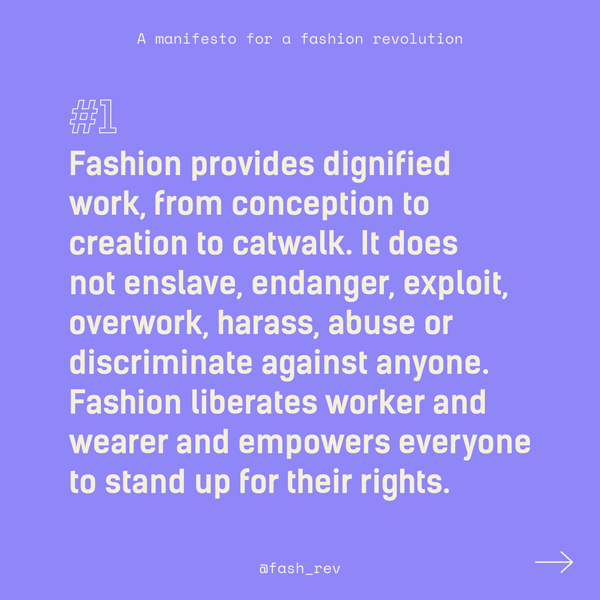
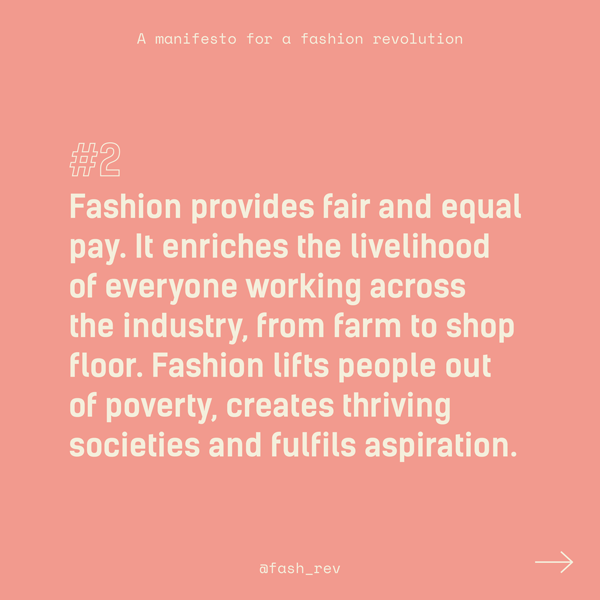
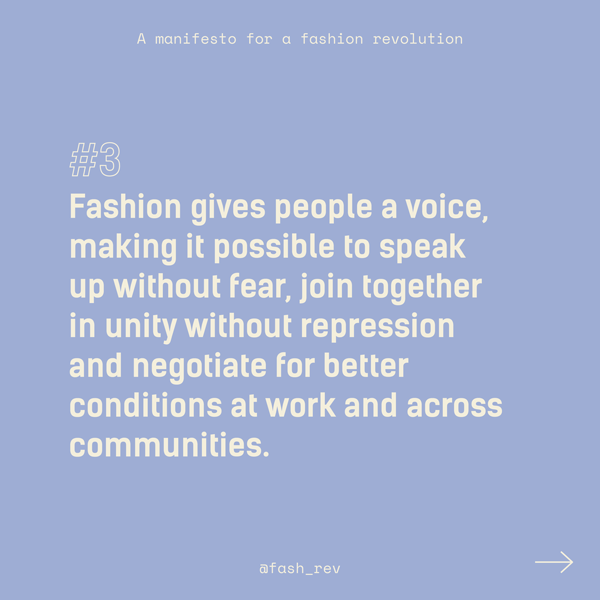
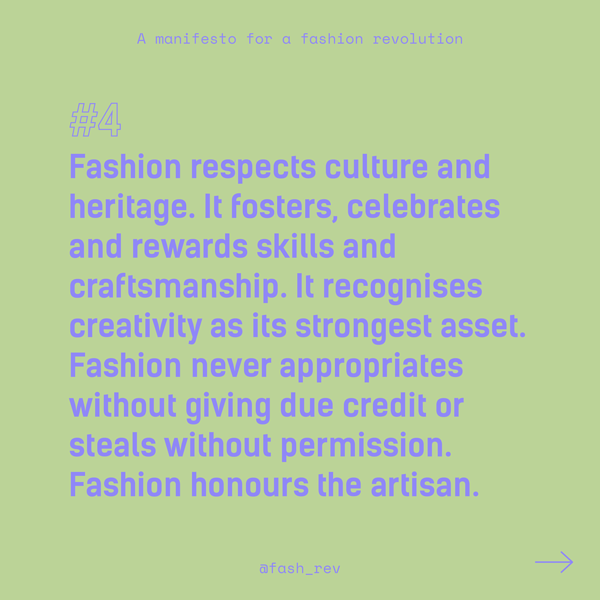
Some of the points in the Fashion Revolution Manifesto. Image credit: Fashion Revolution
Last but not least, focus on style not fashion. The difference between fashion and style is that fashion is bounded with trends, while style is about dressing with authenticity. Spend some time discovering your unique fashion style.

